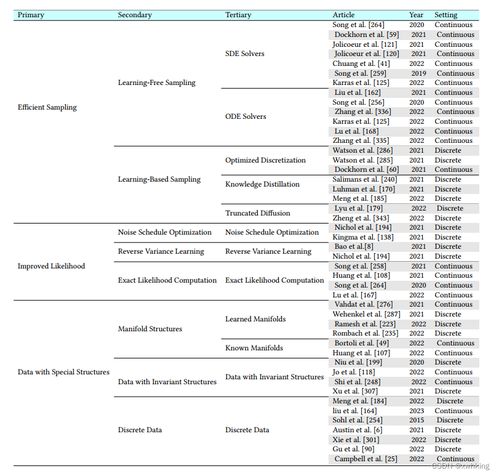A Comprehensive Overview of Textile Ingredients and Their Impact on Durability
This article presents a comprehensive overview of textile ingredients and their impact on durability. The discussion covers the various types of materials used in textile production, including cotton, polyester, and nylon, among others. The importance of these materials in determining the quality, strength, and longevity of textiles is discussed extensively. Additionally, the factors that influence the durability of textiles, such as dyeing processes, weaving techniques, and washing and drying practices, are examined. The article concludes by highlighting the importance of selecting appropriate textiles based on specific requirements, to ensure the best possible performance and longevity over time.
Introduction to Textile Ingredient Composition Textiles, the fabric of our lives, comprise a wide range of materials with varying compositions. Each type has its unique properties that determine their durability, comfort, and functionality. In this talk, we will explore the key components found in textiles and how they contribute to their overall performance.
-
Natural Fibers: Natural fibers are derived from plant sources and animal skin. Examples include cotton, linen, wool, and silk. These textiles are soft and breathable, offering excellent comfort. Cotton, for instance, is widely used in clothing due to its moisture-wicking properties. Linen, on the other hand, is known for its strength and durability, making it ideal for outdoor wear. Wool, a natural insulator, provides warmth during colder months.

-
Man-Made Fibers: These are synthetic materials made from petrochemicals or renewable resources. They are strong, resistant to water, and can be dyed to match any color. Examples include polyester, acrylic, nylon, and spandex. These materials are commonly used in high-performance sportswear and technical garments. Polyester, in particular, is a popular choice due to its durability and resistance to wrinkles. Acrylic and nylon are also strong but require regular washing to maintain their quality. Spandex is elastic and stretchy, perfect for athletic wear.
-
Blends: Many textiles are created by combining different materials to achieve specific properties. For example, a blend of cotton and polyester can provide comfort while still being durable. Blended textiles are versatile and can be tailored to fit various needs.
-
Additives: Additives such as softeners, flame retardants, and antistatic agents are added to textiles to improve their performance. Softeners help maintain the texture of fabrics, preventing pilling and fading. Flame retardants ensure that textiles do not catch fire when exposed to flames. Antistatic agents prevent static electricity, which can cause discomfort during wear.
-
Waterproofing Materials: Waterproofing agents like waterproofing waxes and oils are added to textiles to protect them against moisture. This is particularly important for outdoor wear, where moisture can damage the fabric over time.
Impact of Textile Ingredient Composition on Durability The durability of textiles is determined by the combination of these ingredients. For instance, natural fibers like wool and silk tend to become weaker with age and exposure to damp conditions, making them prone to wear and tear. On the other hand, man-made fibers like polyester and nylon are more resilient, withstanding repeated washing and wear without losing their shape or integrity. Blends of different materials often offer an intermediate level of durability, depending on the proportions of each component.
In addition to physical durability, the chemical properties of textile ingredients also play a role in their longevity. Synthetic materials may have a higher resistance to stains and odors than natural fibers, but they can fade over time if exposed to sunlight or chemicals. Textile additives like flame retardants can increase durability but also pose safety concerns when used inappropriately.
Case Study: Tencel - Sustainable and Durable Textile Tencel is a premium textile material made from wood pulp derived from sustainable forestry practices. It is highly biodegradable and resistant to moths and mildew, making it an ideal choice for outdoor apparel and home furnishings. Tencel's durability stems from its natural fiber composition and the fact that it does not require harsh treatments like bleaching or dyeing. However, it does require regular care to maintain its freshness and color. Tencel's sustainability credentials have led to increased demand in the fashion industry, as consumers seek environmentally friendly products that also offer good quality and longevity.
Conclusion Understanding the composition of textiles and how they impact durability is crucial for selecting appropriate garments and accessories. Consumers should consider factors like natural vs. synthetic fibers, blends, additives, and the environment when making their choices. By doing so, they can ensure that their textiles last longer and perform better throughout their life cycle.
纺织品成分简介
纺织品是日常生活中不可或缺的组成部分,它们由各种纤维和材料制成,涵盖了从棉、麻、丝、毛到合成纤维等多个领域,在纺织品中,成分起着至关重要的作用,它们决定了纺织品的性能、用途和价格。
主要纺织品成分及其作用
纤维成分:
(1)天然纤维:如棉、麻、丝等,它们是天然的有机物质,具有吸湿性好、透气性强、柔软舒适等特性,天然纤维在纺织品中广泛应用,用于制作各种衣物、床品等。
(2)合成纤维:如聚酯纤维、聚酰胺纤维等,它们是由化学物质合成而成的,具有高强度、高耐磨、抗皱等特性,在现代纺织工业中,合成纤维已经成为不可或缺的一部分。

材料成分:
(1)塑料:用于制作各种包装材料、容器等,塑料制品轻便、耐用,适用于各种场合。
(2)橡胶:用于制作各种鞋材、手套等,橡胶制品具有弹性好、耐磨损等特性,适用于各种运动和户外场合。
案例说明:纺织品成分在日常生活中的应用
-
棉质衣物:棉质衣物以其舒适性、透气性和吸湿性受到广大消费者的喜爱,棉质衣物主要由天然纤维制成,如棉花、亚麻等,它们不仅穿着舒适,而且环保,是可持续性生活的代表之一。
-
丝绸面料:丝绸面料以其细腻、柔软、光泽度好的特性受到消费者的青睐,丝绸面料主要由天然蚕丝制成,具有抗菌、抗过敏等特性,适用于制作高档服装和家居用品。
纺织品成分的测试与评估方法
为了确保纺织品的质量和性能,需要进行一系列的测试和评估方法,以下是一些纺织品成分的测试与评估方法:
-
纤维成分测试:通过显微镜观察纤维的形态、长度、直径等参数,以及化学分析等方法,评估纤维的质量和性能。
-
材料成分测试:通过物理性能测试、化学分析等方法,评估材料的质量和性能,塑料制品需要进行拉伸强度、冲击强度等测试,以评估其耐用性和安全性。
纺织品成分的未来发展趋势
随着科技的不断进步和消费者对纺织品品质要求的不断提高,纺织品成分的未来发展趋势将更加多元化和个性化,未来纺织品将更加注重环保、可持续性、功能性等方面的发展,纺织品也将更加注重个性化定制和智能化生产等方面的发展,以满足消费者对高品质纺织品的追求。
纺织品成分是决定纺织品性能、用途和价格的重要因素,在纺织品中,天然纤维和合成纤维是主要的成分类型,它们各自具有独特的性能和应用领域,纺织品成分的测试与评估方法也是非常重要的,只有通过科学的方法评估纺织品的质量和性能,才能确保消费者的权益和安全,未来纺织品的发展趋势将更加多元化和个性化,以满足消费者对高品质纺织品的追求。
Articles related to the knowledge points of this article:
A Global Fabrics Revolution The Untold Story of Qi Da Textiles
The Dynamic World of Woollen Apparel:An Overview with a Twist
Navigating the World of Textile Accounting
Top Ten Textile Brands in the World:Brands,Prices and Visual Evidence



